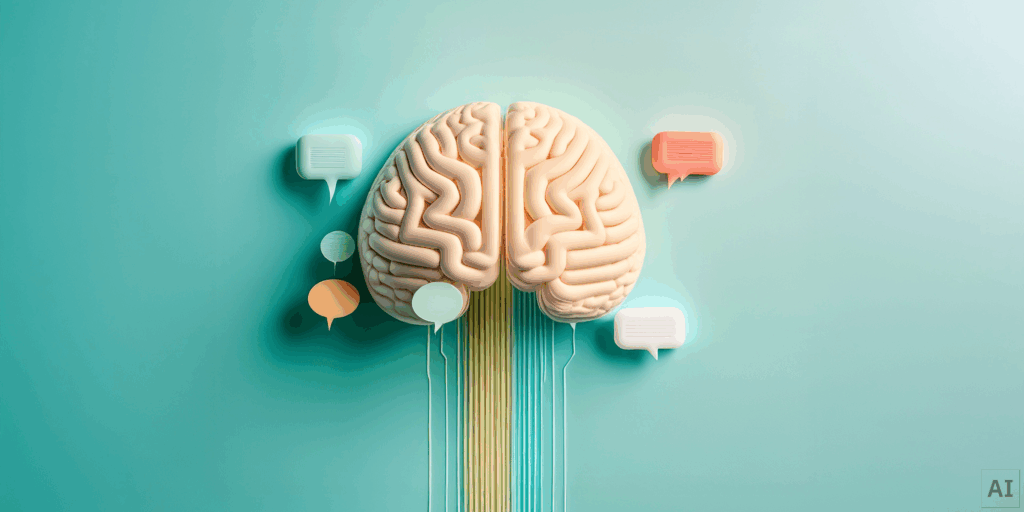
How Artificial Intelligence Will Eventually Eradicate Addiction in the United States
Addiction has long been one of the most pervasive and complex public-health crises in the United States. It has resisted traditional treatment models, challenged the limits of medicine, and devastated families and communities across every demographic. Despite decades of research, billions in funding, and countless treatment innovations, relapse rates for substance use disorders have remained stubbornly high. Yet, as artificial intelligence (AI) matures, a paradigm shift is underway—one that could fundamentally transform how the nation prevents, diagnoses, treats, and ultimately eliminates addiction. AI’s capacity to synthesize massive datasets, personalize interventions, predict relapse, and rewire systems of care offers a future in which addiction is not merely managed but eradicated.
A New Kind of Intelligence for an Old Problem
Addiction, at its core, is a disorder of learning, memory, and reward. It hijacks the brain’s dopaminergic pathways, training the mind to pursue immediate chemical gratification despite long-term harm. Traditional therapies—behavioral counseling, medication-assisted treatment, and peer support—have targeted the human psyche with varying degrees of success. What these models have lacked is the ability to integrate biological, psychological, and environmental data in real time. AI, by contrast, excels at this form of integration.
Machine-learning algorithms can process millions of behavioral signals—from smartphone usage and geolocation patterns to speech cadence and sleep rhythms—and identify subtle precursors of craving or relapse. Predictive models already used in cardiology and oncology can be retrained to anticipate when an individual is at risk of using again, days or even hours before it happens. As these systems become embedded into wearable devices and digital-health ecosystems, they will transform addiction from a reactive condition into a proactively managed one.
Precision Prevention: Predicting Risk Before Addiction Begins
Perhaps the most revolutionary application of AI lies not in treatment but prevention. The biological and environmental risk factors for addiction—genetics, trauma, family history, peer networks, mental-health status, socioeconomic context—form a multidimensional puzzle that human clinicians struggle to piece together. AI can analyze decades of epidemiological data, genetic markers, and social determinants to identify individuals at high risk long before substance use escalates.
For instance, an AI-driven national health platform could scan anonymized electronic health records, school performance metrics, and social-service databases to detect early patterns indicative of vulnerability: declining academic performance, frequent emergency visits, or parental substance-use history. Rather than waiting for a crisis, such systems could trigger early interventions—school counseling, family therapy, or digital mental-health coaching—targeted precisely where they will be most effective. Over time, predictive analytics could allow public-health agencies to allocate resources dynamically, focusing prevention funding on geographic and demographic hot spots with mathematical precision.
Neuroadaptive AI and the Rewiring of the Brain
Beyond data analytics, AI is beginning to merge with neuroscience in ways that directly affect the biological substrates of addiction. Brain–computer interfaces (BCIs), deep-learning-guided neuromodulation, and adaptive neurofeedback represent a frontier in which algorithms can detect—and gently correct—abnormal neural activity linked to craving and compulsive behavior.
AI-enhanced neuroimaging tools can already map the brain’s reward circuits with extraordinary precision, identifying micro-patterns of activity associated with addictive behavior. Once these signatures are understood, neural networks can be trained to deliver precisely calibrated electrical or magnetic stimulation to restore balance in dopaminergic pathways. For example, an AI-guided transcranial magnetic stimulation (TMS) protocol could detect when craving networks in the prefrontal cortex and nucleus accumbens begin to synchronize and automatically adjust stimulation intensity to disrupt the loop.
In the next decade, this will likely evolve into fully closed-loop systems—wearable or implantable devices that monitor brain states continuously and deploy corrective signals when addiction-related patterns arise. The fusion of neurotechnology and AI could eventually recondition the brain away from compulsive reward seeking altogether, offering a true biological cure.
Personalized Digital Therapists and 24/7 Support

The therapeutic alliance—the empathetic bond between clinician and patient—is one of the most powerful predictors of recovery. But human therapists are limited by availability, cost, and geography. AI can replicate aspects of that alliance through intelligent conversational agents capable of delivering evidence-based therapy anytime, anywhere.
Natural-language models trained on cognitive-behavioral therapy (CBT), dialectical-behavior therapy (DBT), and motivational interviewing techniques can engage individuals in real-time therapeutic dialogue. These AI companions are not meant to replace human therapists but to augment them, filling the gaps between sessions and offering immediate support during moments of crisis. They can provide coping strategies, challenge irrational thoughts, and even contact human support networks when a relapse risk is detected.
Because these systems learn from every interaction, they can continuously refine their therapeutic style to match the user’s emotional tone, learning style, and progress. Over time, millions of anonymized interactions will produce a corpus of data larger than any therapist could experience in a lifetime, allowing AI models to discover new, empirically validated therapeutic micro-interventions that could be standardized nationwide.
AI and Medication Optimization
Medication-assisted treatment (MAT) has been one of the most effective strategies for opioid-use disorder, yet it remains underutilized and poorly optimized. Dosing regimens for medications like buprenorphine, methadone, or naltrexone are typically standardized rather than personalized. AI can change this by combining pharmacogenomic data with behavioral analytics to tailor medication precisely to each individual’s metabolic profile and adherence patterns.
Machine-learning algorithms can predict how a patient will respond to different formulations based on genetic polymorphisms in liver enzymes, receptor types, or even gut microbiome composition. Predictive dosing systems could then adjust medication levels automatically, reducing side effects and improving compliance. Combined with digital-pill technology that monitors ingestion, AI can create a feedback loop ensuring optimal pharmacological support while preventing diversion or misuse.
The Power of Behavioral Data
In the digital age, every smartphone interaction is a behavioral data point. How often a person texts, how long they sleep, which social-media posts they engage with—these subtle metrics form a detailed portrait of mental state and social function. AI can analyze this ambient data to detect early signs of relapse long before they manifest behaviorally.
For instance, a user’s sudden increase in nighttime phone activity, decreased physical mobility from wearable data, and reduced social engagement could signal rising anxiety or depression—precursors of relapse. The AI could then nudge the user to perform mindfulness exercises, contact a support peer, or schedule a telehealth check-in. This level of precision transforms relapse prevention from reactive intervention into predictive maintenance.
Transforming Treatment Infrastructure
Beyond individual care, AI can optimize the entire treatment infrastructure. In the U.S., addiction treatment has long been fragmented, under-regulated, and inconsistently funded. AI can identify inefficiencies, streamline patient flow, and match individuals to the most effective treatment programs based on their unique profile.
Predictive models could guide clinicians on whether a patient would benefit more from inpatient residential care, intensive outpatient treatment, or telehealth therapy, using variables like comorbidities, social support, and relapse history. Natural-language processing systems could automate intake, documentation, and insurance preauthorization, freeing clinicians to spend more time on direct care. At the systems level, government agencies could use AI to forecast future addiction trends and allocate resources dynamically, ensuring treatment availability keeps pace with demand.
Ethical and Societal Challenges
While the promise of AI in eradicating addiction is immense, the ethical landscape is complex. Privacy is a central concern—particularly when dealing with sensitive behavioral or neurobiological data. Safeguards must ensure that predictive systems do not stigmatize individuals or enable discrimination in employment, insurance, or law enforcement.
There is also the question of algorithmic bias. If the training data reflects systemic inequities—racial, socioeconomic, or geographic—the AI could perpetuate or even amplify them. Therefore, developing transparent, ethically aligned algorithms will be critical. Public oversight, patient consent, and continuous auditing of AI models will help ensure these technologies serve human well-being rather than corporate profit or surveillance interests.
Integrating AI into the Recovery Ecosystem
Addiction recovery is not merely about abstaining from substances; it is about rebuilding meaning, connection, and purpose. AI can enhance, but not replace, the human dimensions of recovery. Integrating AI tools into existing frameworks—12-Step programs, peer-support networks, and community outreach—can amplify their reach and effectiveness.
For instance, virtual-reality platforms powered by AI can simulate real-world triggers in a safe, controlled environment, allowing individuals to practice coping strategies under therapist supervision. AI-driven social platforms could match people in recovery with mentors whose profiles best align with their stage of change, creating digital communities that sustain engagement and accountability.
As data accumulates, AI will identify which combinations of therapy, medication, and social support yield the highest long-term recovery rates for specific subpopulations. This meta-intelligence will allow continuous improvement of the entire ecosystem, moving addiction treatment from art toward science.
AI in Public Policy and Law Enforcement

The implications of AI extend beyond the clinic into the realms of policy and criminal justice. Predictive analytics could help law enforcement and social services identify communities at risk of substance-use epidemics before they escalate. AI models analyzing prescription data, overdose patterns, and socioeconomic indicators could detect emerging hotspots and trigger rapid, preventive interventions.
At the same time, AI could help reform the justice system by differentiating between individuals who need treatment versus incarceration. Algorithms that assess behavioral risk, mental-health comorbidity, and treatment responsiveness could guide diversion programs, ensuring people with substance-use disorders receive care instead of punishment. Over time, this integration of public-health and justice data could reduce recidivism, overdose deaths, and the enormous societal costs of addiction.
Economic and Workforce Transformation
Addiction drains the U.S. economy of hundreds of billions annually through lost productivity, healthcare expenses, and criminal-justice costs. AI’s ability to eliminate addiction would therefore constitute not just a medical triumph but an economic revolution. As predictive prevention and precision treatment reduce the national addiction burden, resources can be reallocated toward education, community development, and innovation.
AI could also strengthen the behavioral-health workforce. Intelligent automation can handle documentation, outcome tracking, and administrative burden, allowing clinicians to focus on patient interaction and complex cases. Simultaneously, AI-driven education platforms could train new addiction counselors using immersive simulations and adaptive learning, rapidly expanding the nation’s treatment capacity.
From Eradication to Immunity: The Future Vision
To speak of “eradicating” addiction may sound utopian, but it is not unprecedented. Humanity has eliminated diseases such as smallpox and nearly conquered others like polio through coordinated global effort and technological advancement. Addiction is more complex because it is behavioral and neurobiological, not viral—but it is still governed by patterns, triggers, and vulnerabilities that AI can learn to anticipate and neutralize.
The ultimate vision is a society in which addiction risk is continuously monitored and modulated through a seamless web of AI-driven systems—neural, behavioral, and social. Genetic predispositions would be identified at birth; personalized resilience training would begin in childhood; environmental triggers would be detected and mitigated in real time; and those entering recovery would be surrounded by intelligent support systems that make relapse statistically improbable. In this scenario, addiction would become as rare and treatable as any other preventable disorder—a footnote in public-health history.
The Human Element
Even in a world saturated with intelligent technology, the human spirit remains essential. AI can map craving patterns, stimulate neural circuits, and simulate empathy—but it cannot experience redemption, forgiveness, or purpose. The eradication of addiction will not mean the elimination of suffering or temptation; it will mean that humanity has finally developed the tools to understand, predict, and heal its own self-destructive impulses. AI, in this sense, becomes not the replacement of human compassion but its amplification.
The future of addiction recovery will be built on collaboration—between neuroscientists and software engineers, between therapists and data scientists, between policy makers and ethicists. As these disciplines converge, the boundaries between biology, technology, and psychology will blur. What will remain constant is the drive to relieve human suffering. In that mission, AI may prove to be the most compassionate invention of all.
Conclusion
Artificial intelligence holds the promise of transforming addiction from an intractable human tragedy into a solvable systems problem. By integrating predictive analytics, personalized neurotherapy, digital companionship, and data-driven policy, AI can attack addiction at every level—biological, behavioral, and societal. The path will require rigorous ethics, interdisciplinary collaboration, and a refusal to let technology eclipse empathy. Yet if guided wisely, AI may deliver what centuries of medicine could not: a United States where addiction is not a life sentence, but a preventable, curable, and ultimately eradicable condition.
TRUE Addiction & Behavioral Health and AI
TRUE Addiction and Behavioral Health will remain at the cutting edge of service delivery by integrating advanced artificial intelligence into every aspect of treatment. AI-driven analytics will enhance assessment accuracy, predict relapse risk, and personalize recovery plans in real time. By combining compassionate clinical expertise with intelligent data insights, TRUE will continuously refine its care model, ensuring that each client receives precisely what they need to heal. This fusion of innovation and empathy positions TRUE as a national leader in the future of behavioral health—where technology and human understanding work hand in hand to achieve lasting recovery.
AI & Addiction FAQs
How can artificial intelligence help eradicate addiction in the United States?
Artificial intelligence can revolutionize addiction treatment by predicting relapse risks, personalizing therapy, and optimizing medication plans through real-time data analysis. AI-driven systems can identify early warning signs of substance use, allowing proactive interventions before relapse occurs. Over time, this predictive precision could make addiction preventable and fully treatable nationwide.
What role does AI play in preventing addiction before it begins?
AI can analyze patterns across health, behavioral, and social data to identify individuals or communities at high risk for addiction. By recognizing early indicators—such as stress, mental health issues, or social instability—AI systems can recommend targeted prevention strategies and allocate resources where they’ll have the greatest impact.
How will TRUE Addiction and Behavioral Health use AI in its treatment programs?
TRUE Addiction and Behavioral Health is integrating AI into its clinical model to enhance assessment accuracy, personalize recovery plans, and monitor patient progress. AI systems will analyze behavioral and biological data to adapt treatment dynamically, empowering clinicians to provide more precise, compassionate, and effective care.
Will AI replace human therapists in addiction treatment?
No. AI is designed to augment, not replace, human care. While AI can provide 24/7 support, monitor relapse risk, and guide behavioral insights, the human connection—empathy, trust, and emotional understanding—remains the foundation of recovery. TRUE’s model combines advanced AI with deeply compassionate, human-centered treatment.
What are AI-driven neurotechnologies, and how do they help with addiction?
AI-driven neurotechnologies, such as adaptive neurofeedback and brain–computer interfaces, can identify and regulate brain activity patterns linked to craving and compulsive behavior. These tools can retrain neural pathways, helping individuals regain control over reward and impulse systems and reducing the biological drive toward addiction.
Is AI safe to use in behavioral health and addiction treatment?
Yes, when implemented responsibly. TRUE Addiction and Behavioral Health prioritizes data privacy, ethical standards, and patient consent. AI systems are used to enhance clinical outcomes, not to replace personal decision-making. Transparency and oversight ensure that technology serves human well-being at every stage.
How does AI improve medication-assisted treatment (MAT)?
AI can analyze genetic, metabolic, and behavioral data to personalize dosing for medications like buprenorphine or naltrexone. It can predict side effects, adjust treatment in real time, and monitor adherence—all of which improve outcomes and reduce relapse risk.
Will AI help reduce stigma around addiction?
Yes. By framing addiction as a measurable, treatable neurological condition rather than a moral failure, AI reinforces the scientific understanding of substance use disorders. Data-driven insights can shift public perception and policy toward compassion, prevention, and recovery rather than punishment.
How will AI shape the future of treatment centers like TRUE Addiction and Behavioral Health?
AI will make treatment centers more efficient, personalized, and results-driven. From automated intake and progress tracking to real-time relapse alerts and post-discharge monitoring, centers like TRUE will operate as intelligent recovery ecosystems—continuously evolving through data, compassion, and innovation.
What is TRUE Addiction and Behavioral Health’s vision for the future?
TRUE envisions a future where no one suffers needlessly from addiction. By merging advanced AI technology with evidence-based therapy and heartfelt compassion, TRUE Addiction and Behavioral Health aims to lead the nation in creating a model of care that makes long-term recovery the rule—not the exception.
Table of Contents
Verify Your Insurance Online
We are here to help. Contact us today and get the answers you need to start your journey to recovery!
